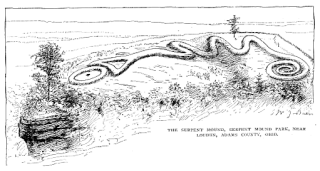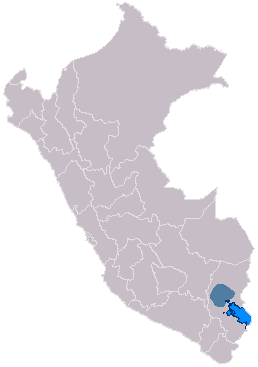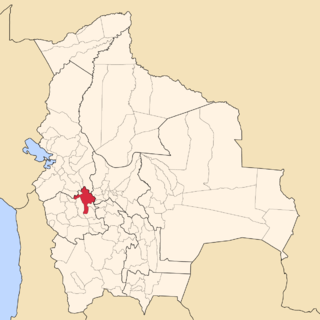Chiripa may refer to:
- Chiripa culture, an archaeological culture of Bolivia
- Chiripá people, a Guaraní subgroup of Paraguay, Argentina and Brazil
- Chiripá language, their language
Chiripa may refer to:
British may refer to:
Italian(s) may refer to:
Spanish might refer to:
Tamil may refer to:
The Guarani languages are a group of half a dozen or so languages in the Tupi–Guarani language family. The best known language in this family is Guarani, one of the national languages of Paraguay, alongside Spanish.

The Chiripa culture existed between the Initial Period/Early Horizon, from 1400 to 850 BCE along the southern shore of Lake Titicaca in Bolivia.

Several chronologies in the archaeology of the Americas include a Formative Period or Formative stage etc. It is often sub-divided, for example into "Early", "Middle" and "Late" stages.
Chiripá Guarani, also known as Ava Guarani and Nhandéva (Ñandeva), is a Guaraní language spoken in Paraguay, Brazil, and also Argentina. Nhandéva is closely connected to Mbyá Guaraní, as intermarriage between speakers of the two languages is common. Speakers of Nhandéva and Mbyá generally live in mountainous areas of the Atlantic Forest, from eastern Paraguay through Misiones Province of Argentina to the southern Brazilian states of Paraná, Santa Catarina, and Rio Grande do Sul. There are approximately 4,900 speakers in Brazil and 7,000 in Paraguay.
Eastern Bolivian Guaraní, known locally as Chawuncu or Chiriguano (pejorative), is a Guaraní language spoken in South America. In Bolivia 33,670 speakers, called the Ava Guaraní people were counted in the year 2000, in the south-central Parapeti River area and in the city of Tarija. In Argentina, there were approximately 15,000 speakers, mostly in Jujuy, but also in Salta Province, and 304 counted in the Paraguayan Chaco.
The Guaraní language belongs to the Tupí-Guaraní branch of the Tupí linguistic family.
Telugu may refer to:
Swedish or svensk(a) may refer to:
Western Bolivian Guarani, known locally as Simba and Simba Guarani, is a Guarani language spoken in Bolivia, in the Chuquisaca Department north of the Pilcomayo River.

Taraco Municipality is the seventh municipal section of the Ingavi Province in the La Paz Department, Bolivia. Most of its area is situated on Taraco Peninsula jutting into Lake Wiñaymarka, the southern branch of Lake Titicaca. Its seat is Taraco.

Indigenous peoples in Paraguay, or Native Paraguayans, include 17 ethnic groups belonging to five language families. While only a 1.7% of Paraguay's population is fully indigenous, 75% of the population identifies as being partially of indigenous descent; however, the majority do not identify as being indigenous but as Mestizos. Most of the native population lives in the northwestern part of the country, the Gran Chaco.

The Pucará culture was an archaeological culture which developed in Qullaw, along the north-western shore of Lake Titicaca. It was characterized by a hierarchy of sites made up several smaller centers and villages scattered throughout the northern basin of the Titicaca, ruled from its nucleus - the town of Pukara with an approximate extension of 6 square kilometers, constituted the first properly urban settlement in the Titicaca basin. Its sphere of influence reached as far north as the Cuzco Valley and as far south as Tiahuanaco. The culture had two phases of development within the Formative Period: the Middle Formative, and Late Formative.

Pucará, Puno is a town in the Puno Region, Lampa Province, Pucará District, Peru. It is located to the north-west of Lake Titicaca.
Sonia Alconini Mujica is a Bolivian anthropologist and archaeologist specializing in the socioeconomic and political development of early states and empires in the Andes. She has studied the dynamics of ancient imperial frontiers, and the ways in which Guarani tropical tribes expanded over these spaces. She has also conducted work in the eastern Bolivian valleys and Lake Titicaca region.

The Wankarani culture was a formative stage culture that existed from approximately 1500 BCE to 400 CE on the altiplano highlands of Bolivia's Oruro Department to the north and northeast of Lake Poopo. It is the earliest known sedentary culture in Bolivia, as after circa 1200 BCE camelid hunters of the altiplano became camelid herders and sedentary lifestyle developed. The Wankarani culture was little researched before 1970, when Carlos Ponce Sanginés defined all the mound sites in the area as belonging to one culture that predated Tiwanaku and was contemporary with the Chiripa culture.
The Chiripá are an Guaraní indigenous people who live mainly in Paraguay in the area bounded by the Paraná River and the Acaray and Jejuí Rivers, while in Brazil they coexist with other Guarani groups in villages in the states of Mato Grosso do Sul, Paraná and São Paulo. The term ñandéva is used in Paraguay to refer to the tapietes. In Argentina they are found in small groups living among the Mbyas in the province of Misiones. They are highly acculturated but maintain their dialects and religious traditions.